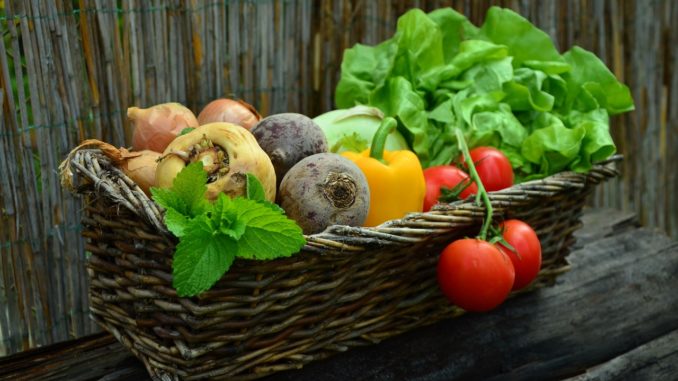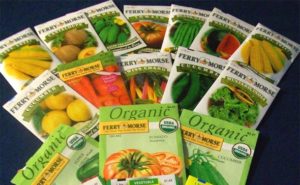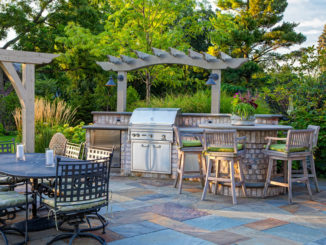
So you’ve decided to kick-start your new year by getting out more and improving your health. Well what better way of combining both goals than getting your hands a bit dirty in the garden. It’s going to be adventurous and it’s not going to be easy but by gosh you’re going to reap the rewards in full. This year your going to be growing your own vegetables. It’s the best possible way of getting your hands on the freshest, chemical free produce. If you’ve never tried growing vegetables in your garden before then this will be a great guide to give you a place to start and if you’ve tried last year but didn’t see the results you were looking for then you may find a couple of helpful tips to improve. So let’s start with the basics and work our way through.
Why bother at all?
Just before we start it may be a great reminder to know the benefits of growing your own vegetables. It may be difficult at times to see great results and knowing why you’re doing it will be the motivation you need to persevere. Even brands that are plastered with the label ‘organic’ have often been sprayed continuously with chemicals that your body simply does not need or want. By following the journey of your own plants you’ll know for sure exactly what went into making them other than sweat and love. Taking time out and reconnecting with nature can be truly rewarding. It’s great for both your physical and mental health. So keep that in mind when your raking away the weeds.
What you will need
You’ll have to visit a local garden store to pick up a few essentials. It’s a great place to start as there will always be helpful staff on hand looking to answer any questions you may still have. You can even bring in samples of what you’ve grown for them to inspect. They’re knowledge is expert and the advice they can offer shouldn’t be overlooked. So don’t be afraid to approach them and remember there’s no such thing as a stupid question.
A couple of basic tools should set you off to work in no time. Every gardener needs a good shovel. Look for one with a longer shaft to avoid back problems. Your going to be digging your foot into the blade of the shovel so make sure it’s strong and can take the weight. A blade with a straight edge for your foot will be more comfortable. A smaller version for your hands to work with is a trowel. You want to find one made from stainless steel that is attached firmly to the wooden handle. Make sure there’s no gaps in the metal for water to get in or you may find the wood rotten over time. Your third tool of choice to pick up will be your rake. Get one with a ragged edge on one side and straight on the other that way you can use it to rake the soil and also flatten it out again.
You can’t grow anything if you don’t have seeds. There are lots of vegetables to choose from. Find out what grows best in your area before you plant. Vegetables that are common and easy to grow are beans, potatoes, tomatoes, onions and carrots.
 Where to start?
Where to start?
Find a section of your garden with great access to sunlight and it’s time to start digging. Clean up the area you want to work in and prepare the soil to a state that it can be worked with. You may want to fence off this area to keep out any unwanted wildlife visitors. If you have rabbits in your area then you could sprinkle some cayenne pepper around the area where you’ve planted your vegetables. One whiff of that and they won’t be coming back anytime soon. If your interested in methods of keeping away pests you could check out this website to read more.
You don’t always have to grow everything outdoors and can start from home. You will need soil though. There’s good soil and there’s bad soil. The best way of finding out what you’ve got to work with is to get it tested. Take five samples from around your garden and mix them together. Take that as a sample and send it off to be tested. In return you will receive the results letting you know how good your soil is and if needs be what to put in it to make it better. Your going to want to fertilize that soil to get the best results.
A lot of plants fail to grow from being over watered and drowned or the seeds have been washed away before they’ve had time to sprout. Another reason for growth failure is from planting to deep. A good rule of thumb is to plant the seeds depth five times the width of the seed. That means some seeds may only need lightly pushed into the ground with the tip of your finger.
 Crop rotation
Crop rotation
Some vegetables take nutrients from the ground and others return them. An idea that’s been used for centuries is crop rotation. This also prevents your soil from producing disease. Split your vegetables into four sections. Your first section can be potatoes and tomatoes which belong to the solanaceae family. Once they’ve grown well you can add in some leeks and onions to this section. The umbelliferae section will go into area two. The brassicas family hosts your Brussels sprouts cabbage and cauliflower and this will make up area three. The final bed can be used for legumes which will be your beans and peas.
Start a diary and keep note of what you’ve planted where so that you can rotate and plant each category of vegetable in a different place next year.
There’s a lot to take in for the novice farmer but with time and care you’ll be able to grow vegetables that are enriched with all of the vital vitamins your body needs to stay strong and healthy.




“This year you’re going to be growing your own vegetables. It’s the best possible way of getting your hands on the freshest, chemical-free produce”.
That’s a good idea! a garden that can give food, Not only vegetables can be edible but also some shrubs that we can eat, Moringa (the Moringa genus). Mulberry (the Morus family) are some of the examples of shrubs that we can eat, growing a Hedge Care is also a good idea to start to.
Love it! The information is very helpful for me as I am planning to grow my own vegetables this year! Thank you for sharing such a valuable source of information!
I came across your blog post and found it very useful. I was in a bit of a dilemma trying to figure out if my soil needs fertilizer or not – but now with your help, I know what to do! Thank you for the great tips.